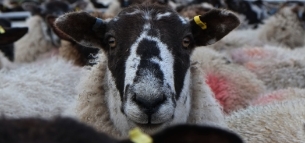Livestock Collection Centres Standards
ANIMAL HEALTH AND WELFARE Version 4.0
Click to view
Key – Those standards which have greater significance (all other standards are normal)
Recommendation – Those which do not affect certification
New – A completely new standard which the member must now adhere to
Revised – A standard that has changed and requires the member to take some different or additional action to before
Upgraded – The standard has been upgraded to a Key standard or from a Recommendation to a full standard
Appendix – Referenced in ‘How you will be measured’. Indicates that additional information is provided in the Appendices, which are available at the end of each section.
MK.AW.1 Key
A system must be in place to check the health and welfare of all livestock by competent site personnel
How you will be measured
MK.AW.1.a
MK.AW.1.b
MK.AW.1.c
MK.AW.1.d
MK.AW.2
A record of all welfare incidents that occur must be kept (Revised)
How you will be measured
MK.AW.2.a
MK.AW.2.b
- Welfare incident book
- Welfare incident book with evidence of annual review by AWO
MK.AW.3 Key
Livestock are handled appropriately (Revised)
How you will be measured
MK.AW.3.a
MK.AW.4 Key
Handling aids used on site must be suitable for the species and used appropriately
How you will be measured
MK.AW.4.a
MK.AW.4.b
MK.AW.5
Electric goads are used by a competent person in the correct manner when all other options have been exhausted
How you will be measured
MK.AW.5.a
MK.AW.5.b
MK.AW.5.c
MK.AW.5.d
Electric goad procedure
MK.AW.6 Key
Immediate and appropriate action for unfit animals must be taken
How you will be measured
MK.AW.6.a
MK.AW.6.b
- Unfit animal procedures
- Emergency euthanasia procedure
MK.AW.7
Livestock must be grouped appropriately (Revised)
How you will be measured
MK.AW.7.a
MK.AW.7.b
MK.AW.7.c
MK.AW.8
Systems must be in place to ensure livestock are penned with sufficient space allowances to ensure animals are not overcrowded
How you will be measured
MK.AW.8.a
MK.AW.8.b
MK.AW.9
Additional provisions are given to specific categories of livestock to deliver their welfare needs
How you will be measured
MK.AW.9.a
MK.AW.10
All pigs must be provided with permanent access to enrichment (e.g. straw, hay, wood, sawdust, rope, soft wood, deformable plastic pipe)
MK.AW.11
Dairy cows with overstocked udders must be milked prior to onward consignment
How you will be measured
MK.AW.11.a
MK.AW.11.b
MK.AW.12 Key
Facilities for providing fresh, clean drinking water to livestock must be available and provided as necessary to meet welfare needs
How you will be measured
MK.AW.12.a
MK.AW.12.b
MK.AW.12.c
MK.AW.13 Key
Suitable feed must be available and provided as necessary to meet welfare needs
How you will be measured
MK.AW.13.a
MK.AW.13.b
MK.AW.13.c
MK.AW.13.d
MK.AW.13.e
MK.AW.13.f
MK.AW.13.g
- Forage warranty declaration
- Feed purchase records
MK.AW.14
Livestock must be held on-site for the minimum time
How you will be measured
MK.AW.14.a
MK.AW.15
Pigs are not kept on site for more than 48 hours
- For more information on handling livestock see https://www.hsa.org.uk/downloads/publications/humanehandlingdownload-updated-2016-logos.pdf
